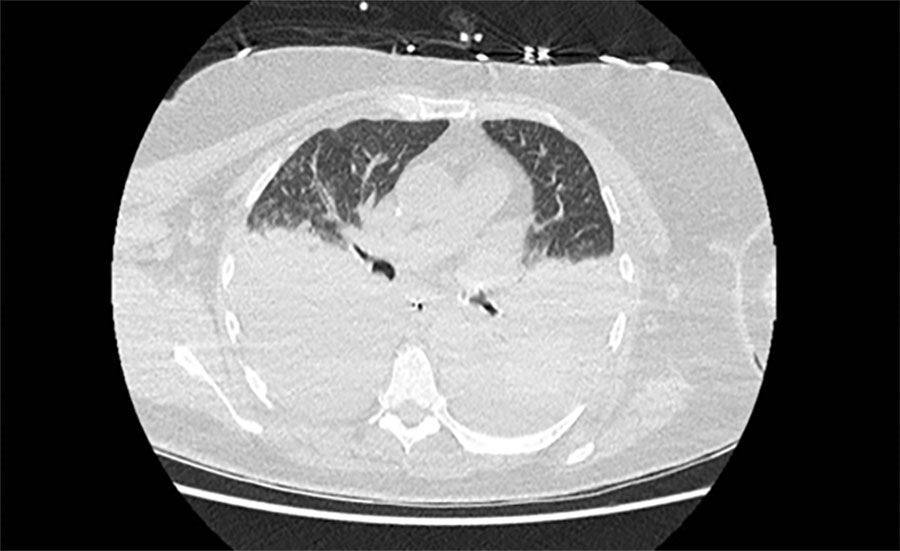Volume 30, Number 10—October 2024
Dispatch
Autochthonous Human Babesia divergens Infection, England
Figure 2

Figure 2. Axial computed tomography image from a case of autochthonous human Babesia divergens infection, England. Image shows bilateral pleural effusions.
Page created: August 28, 2024
Page updated: September 23, 2024
Page reviewed: September 23, 2024
The conclusions, findings, and opinions expressed by authors contributing to this journal do not necessarily reflect the official position of the U.S. Department of Health and Human Services, the Public Health Service, the Centers for Disease Control and Prevention, or the authors' affiliated institutions. Use of trade names is for identification only and does not imply endorsement by any of the groups named above.